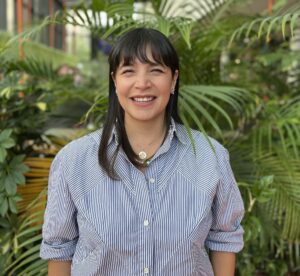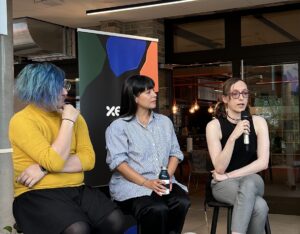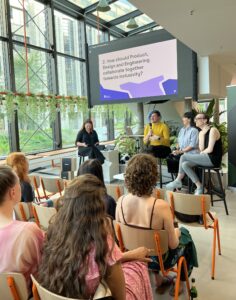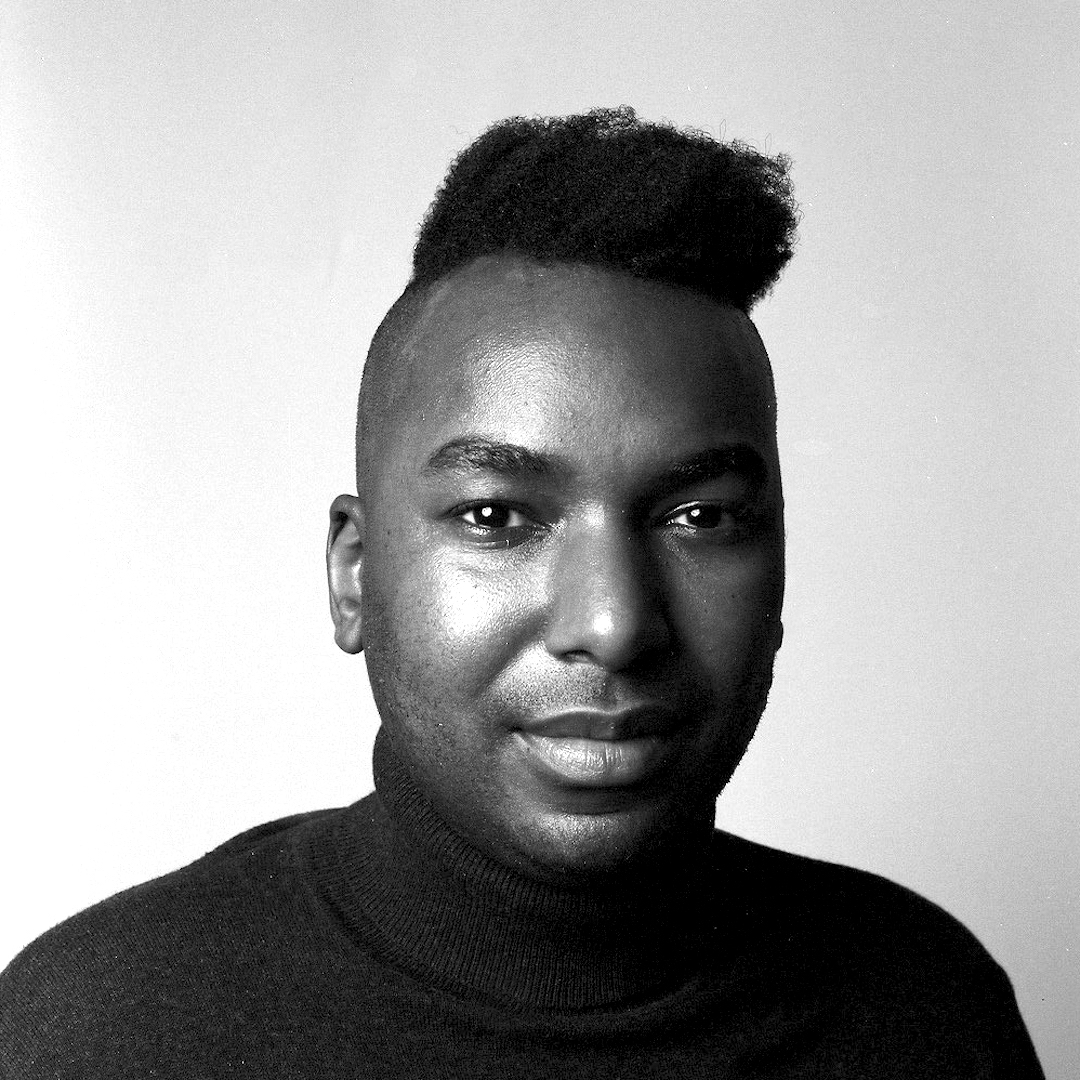5 min. read
Unlocking Inclusivity
Insider Tips to Building Inclusive Tech Products
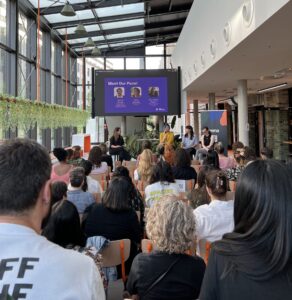
Inclusion in Tech is not just a buzzword; it’s the key to innovation and creating products that cater to the diverse needs of all users.
However, building inclusive tech products is not a coincidence or something that “just happens” –it’s actually a conscious effort. It is all about intentionality. As Engineers, Designers and Product Managers, we all share the responsibility to make sure our end users are seen and thought of. And we know… it ain’t easy. It’s a never-ending path and we have a long way to go but that’s why we gather 3 industry leaders to discuss and share their insights on how to get there.
Before we get started, a special shoutout to our hosts at Just Eat Takeway.com, check out their career site here! Now make sure to get some pen and paper ready, you’ll want to take notes.
Allow us to introduce you to our panel:
Damien Senger
Senior Group Product Manager, Product Experience & Inclusivity at Just Eat Takeaway.com
Damien (they/them) leads a team of talented product managers in transforming Just Eat Takeaway’s product suite into a more modern and inclusive experience for their customers, partners, and employees.
Damien’s unique background in human geography, linguistics, and politics has shaped their values and provided them with a strong foundation for driving change and impact. Damien believes in fostering a diverse and inclusive work environment and has a strong desire to drive a positive impact through strategic planning and bold decision-making on Product Inclusivity, Product Innovation, and Product Experience.
Kitty Giraudel
VP of Engineering at cofenster
Kitty (she/they) is a Frontend Engineer with 11 years of experience and has a strong focus on digital accessibility, diversity and inclusion. Kitty has spent the last 6 years leading teams and growing engineering departments in a healthy way.
As a former technical writer who loves everything about documentation, Kitty has authored two books on CSS and Sass respectively at the start of her career and over 350 technical articles for various popular publications, from CSS-Tricks to Smashing Magazine, from Codrops to Tuts+. Kitty’s main open-source project is a 11y-dialog, a useful JavaScript library to create accessible dialogue windows, downloaded about 45,000 times per week and keeps growing in popularity.
Rosa-Maria Chacon
Head of Product – D&I, Customer Experience at Zalando
Rosa-Maria (they/she) strives to build products that make this world a better and more sustainable place to live in by creating equitable and inclusive customer experiences (online and offline). With more than a decade of experience in product management, strategy and leadership, Rosa-Maria is the official lead to the product organisation and sparring partner to founders and the company’s leadership in strategic initiatives.
Rosa-Maria’s passion lies in helping the entire organisation reach scale and grow while embedding bold product-led practices that ultimately empower teams to provide customer value and reach commercial success.
What does it actually mean to build an inclusive product?
Damien kicked us off by addressing the elephant in the room: not a lot of companies nor their products are accessible and that is a fact. The most simple answer to this question is that it depends on the product or service you deliver.Adding to the mix, Rosa-Maria explained that an inclusive product is one that can be engaged with and accessed by everyone – a product which is valuable, easy to understand and use.
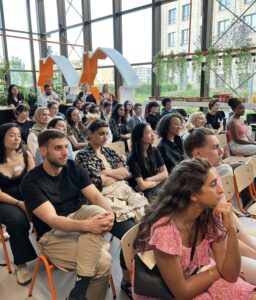
For Kitty, it means to consider who are you willing to exclude? The harsh truth is that we may have to exclude someone at some point. A difficult but fruitful approach. Timing has an important component, it’s not that you’ll want to exclude part of an audience forever but rather refers to prioritisation. Actionable milestones will help confront and overcome excluded individuals for instance. You’re transforming dreadful decisions into action points for the future. You can only do this if you acknowledge and take responsibility of the blind spots.
Rosa-Maria shared a stat by WHO (World Health Organisation) that 1 in 4 people in Europe have a disability so when considering launching a fashion range for people with disabilities at Zalando and to start offering a truly inclusive and accessible customer experience, it became essential to include the disability community and partner with disability inclusion experts in the entire product development process.
Is it better to invest: now or later? This is a common question Damien posed and assured that it is always better to invest early even if it’s not perfect. Later on, you will have to redo it and maybe even from scratch which will cost more in the end.
How should Product, Design and Engineering collaborate together towards inclusivity?
“From a discipline point of view, cross-functional and agile teams build better products. Everyone is in the same room.” –Kitty
Rosa-Maria reminds us of the ultimate common goal: customer-centricity. In order to build customer empathy across these teams it is important they collaborate, gather and exchange customer insights through user research, validation, testing and analytics. There is no need to reinvent the wheel. It is also very important to share these insights with decision-makers as they can become powerful allies and impact whether the product gets developed or not in the end.
Kitty highlights the fact that we don’t have a lot of companies that make this collaboration as part of the modus operandi. Not only is it beneficial in the long run but it is the right thing to do. For this to work, it is essential to make sure you are hiring the right people ready to collaborate and build an accessible product.
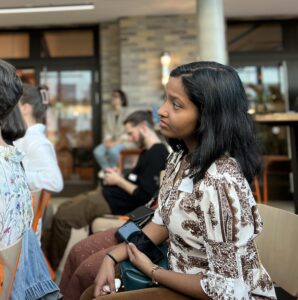
“You need to have a structure to empower. The structure is not only a process, it starts with building the right team. It’s about having a diverse team, it’s more likely someone raises a concern.” –Damien
Diverse teams build better products, you can’t build a product for everyone if the entire team is the same. Fostering a culture of inclusion works when everyone can empathise but from a core level. A lot of teams fail because it’s seen as a factor to be considered sometimes but diversity and inclusion can’t win in isolation or when it is convenient. It is only successful if the whole company actually believes in it.
Damien believes that the best way to get people engaged is by getting people to talk about it. “If we actually want a discussion to happen, then we need to spread the word and make sure to also share these insights with stakeholders because only then it becomes tangible. It’s important to not work in silos and leave it all for the ‘accessibility team’ to solve, one person or team cannot undo the work of an entire company.
Do not spend all your time fixing rather also make sure to invest time in driving change.
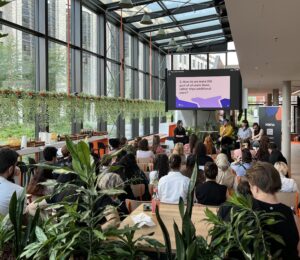
How do we make D&I part of all work done, rather than additional work?
Kitty believes it all comes back to hiring. If you focus only on the “hard skills” and not be mindful of whether they are rude or insensitive then your culture will trickle into your product development.
“You need to hire people who care. You can’t teach people to care about others. When you think about others then inclusivity is easier to implement.” –Kitty
Rosa-Maria emphasises the ‘additional work’ part and argues that by embedding inclusivity in the culture then the way you make decisions, operate and execute are engrained with the same mindset. “It shouldn’t be a checklist or aftermath. You need to move inclusion to the left part of the product development process” says Rosa-Maria. Looking at intersectionality and the different factors involved, there needs to be diversity of thought in the teams that design and build products and accessibility should be made a priority.
Damien adds to the mix the fact that you need to create a movement. Do not be the only one trying to make change otherwise, it will cause a lot of frustration. It’s not on your shoulders so make sure to get allies in different teams willing to fight the fight as well. Ownership must be thrown out of the window and focus on sharing the responsibility.
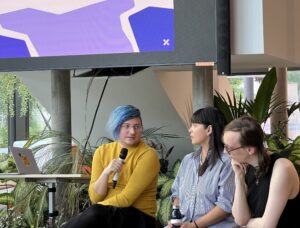
Where to start and who to prioritise?
In Rosa-Maria’s experience, you can start by defining the goals your product needs to become more inclusive. You can also conduct an inclusion audit of your product and implement the results into your product development. Then Rosa-Maria gave an example: “At Zalando, there was an inclusion audit that looked into how customers felt welcomed, included, represented etc. We also work with experts in disability inclusion and with people from the communities we are serving. We aim to design “with”, and not “for”.
Every organisation is different and there is no single recipe, says Damien. But accessibility is always the bare minimum. Within the EU, by 2025 all e-commerce platforms are obliged to have accessibility options by law. Little do people realise that by improving the accessibility for someone, you’ll make it better for everyone.
At the end of the day, as a business, we need to think about revenue and the DEI world is very mid to long-term goals. So, how do we even measure inclusivity? Especially when D&I can be de-prioritised because of a short-term focus mentality. Therefore, don’t forget to be proud of the product you’re developing, measure KPIs and take a step back every now and then to remember was has been done –that’s how you see progress.
By nature, inclusivity is never ending and you can always focus on something new. Just keep going.
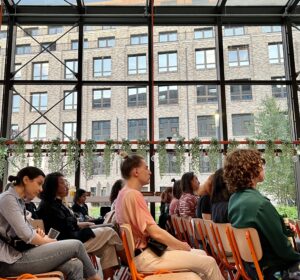
How do we build awareness, empathy and the business case for inclusive products?
Rosa-Maria says building awareness can be done with training and education. You create empathy by ensuring cross-functional collaboration in user research with a broad set of users, as well as collaborating with the communities your product aims to serve.
The most straightforward business case is talking about wins in terms of a broader customer base, higher brand and satisfaction positives. The trick here is using metrics that relate to the company’s short-term and mid-term goals. Trying to find something management can relate to, then quantify and make it attractive to decision-makers.
You need to balance customer needs and be business-centric.
The truth is, as Damien said, you cannot live outside of the reality of the business. You have to play the game and need to understand where the money is. In big businesses, the money is in the portfolio. If you are convincing the management team then you are influencing how money is spent and for Damien, that is where awareness comes in.
The smallest of actions build up and make an impact.
Looking for more inclusivity-related inspiration?
Take a look at these 7 Fierce DE&I Leaders In Berlin You Must Follow or check out these inspiring 5 Allies in Tech.


